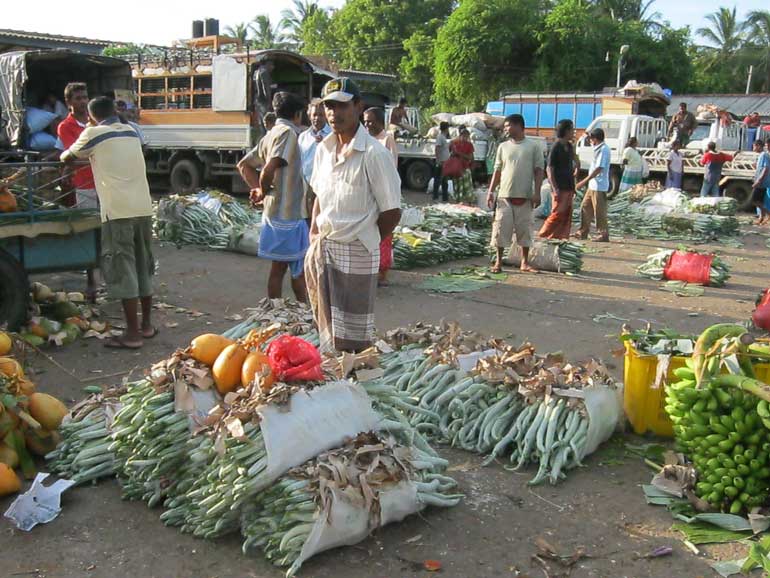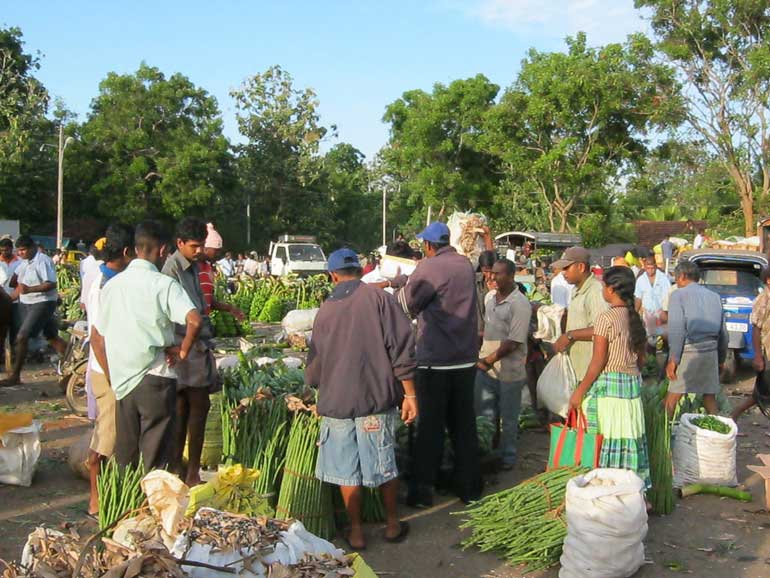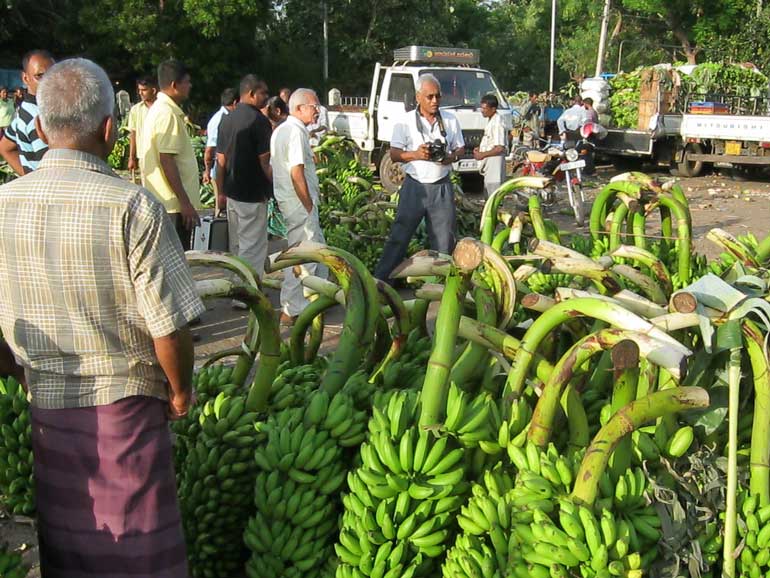Wednesday Nov 19, 2025
Wednesday Nov 19, 2025
Saturday, 7 May 2016 00:10 - - {{hitsCtrl.values.hits}}



By D.C. Ranatunga
I was curious when I read a news report that the weekly village fair – ‘sathi pola’ or ‘game pola’ held once a week – is “to be modernised in a bid to boost rural economies throughout the island”.
A Government website of the Policy Development Office (PDO) of the Prime Minister’s office is to provide a mechanism to link those who want to help develop Sri Lanka directly with village markets in need of essential infrastructure, especially in rural communities around the island.
I agreed with one thing mentioned in what is known as the ‘Long Description’ on the website – that the ‘pola’ plays an important role in rural life in Sri Lanka. It is a meeting place for the community and also serves as the backbone of rural economies, the website says.
However, my immediate reaction was whether a village tradition was going to lose its identity. I may be the ‘old school’ type who has pleasant memories of the ‘good old days’ we always like to talk about. True I haven’t been to a typical village ‘pola’ for many years except the Delkanda semi-urban fair at Gangodawila which still has semblances of what I had seen in my young days, but in a much more larger and ‘business fashion’.
Vivid memories
In the early 1940s I often spent my school holidays at my mother’s village home at Naranwala. Being the only grandchild at the time, my grandparents adored me. Once a week I used to walk with my grandmother to the ‘pola’ which was situated not too far from the house.
I have vivid memories of what I saw and admired. The cloth and jacket clad ‘aachchi amma’ carried a ‘pan-kola malla’ – a bag woven of reed – under her armpit to bring the things she bought. I watched how she bargained with the traders even for a few cents. They invariably lowered the price. Obviously they were making a profit.
I was fascinated by the array of colourful toys, mainly dolls made in Japan. The ‘thorombal’ man displayed bangles, cheap jewellery, pins, needles, hooks and eyes, buttons, combs and other knick-knacks of interest to females. He had brisk sales. He kept on playing with children’s rattles to draw the attention of customers. Most of his items could fit anyone’s purse.
The range of household goods was mainly clay pots used as cooking utensils – ‘hatti mutti – which had a ready market since they often broke or it was time to replace anyway. These were stacked on straw for protection and carefully taken out to avoid breaking. Vegetables, dry fish, dried chillies and other condiments sufficient for a week or two were also in demand. Packeted stuff was unheard of and the trader had a pair of scales to measure.
Bananas, papaw and other fruits were available in plenty. These were brought to the fair packed in large round baskets woven from green coconut palm leaves. Most of the stuff was brought in bullock carts.
Clothing popular with the village folk like fabric or chintz (‘cheetta’), sarongs and banians were sold by the textile vendor who had good business. The ‘pottani karaya’ (literally ‘bundle carrier’) wrapped the different colours and prints of each variety of material in separate sheets of cloth for convenient display once they were opened up. When the business was over he would pack them in the same way and cover with a larger sheet, make into a nice bundle and keep on his head or on one shoulder and move on. Just like the ‘thorombal’ man, he would visit houses on the way. He always carried a yardstick which supported the bundle on the shoulder as well.
Most goods were displayed on the slightly raised ground under cadjan sheds and also in the open. The ‘pola’ was always close to the road and invariably on either side of the road too there were sellers.
‘Thanbili’ vendors had a field day if it was a sunny day. Hot tea was also available, carried in a large aluminium pot kept on a makeshift hearth using firewood to keep the tea in the pot hot. An iron band round the neck of the pot to which a handle was attached, made it easy to be carried about. Next to the pot was a bucket of water, a few glass tumblers and a plank to keep the tumblers to dry once they were washed
I always got ‘seeni bola’ – small sweets of varied shapes and colours. ‘Kotta’, a small sweet in the shape of a pillow with coloured stripes, was one of my favourites. These were brought in fairly tall square tins tied behind the seat of the bicycle. Certain types like ‘seeni motai’ were sold from the tin itself.
We invariably met known parties with whom grandmother would have a chat and exchange village gossip.
Bulk sales
In more recent years wholesale fairs have come up in areas where large stocks of vegetables and fruits are grown. They are more for selling than purchasing.
I still recall the face of the banana trader at the Sooriyawewa ‘Badada Pola’ – Wednesday Fair – I met not so long ago. The broad smile of the habitual betel-chewing type was one of satisfaction. He was obviously happy with his harvest. He was confident of getting a reasonable price for the ‘kesel kena’ – the banana cluster – he was carrying. He had come fair distance from his village making the weekly trudge to sell the produce from his garden crop.
Being a predominantly banana growing area he had stiff competition both from the small growers as well as the big mudalalis. Hundreds of growers gather at this otherwise sleepy area which come alive once a week. In another section are vegetable growers with heaps of their produce or sale. Other popular items are papaw and mango, during the right season when fruits thrive.
The producers get to their spots just after midnight and await the buyers who start arriving from all parts of the country in lorries in the wee hours of the morning to get their pick and hurry back. They are wholesalers who would in turn sell the bananas and vegetables to retailers in their areas. There were traders as in other fairs too, with stuff to sell to the village folk.
I wonder what the PDO in PM’s office is trying to achieve, if it is to create mini supermarkets in the villages. Improvements are welcome but it is always nice to maintain the old touch as well. We’ll have to wait and see.